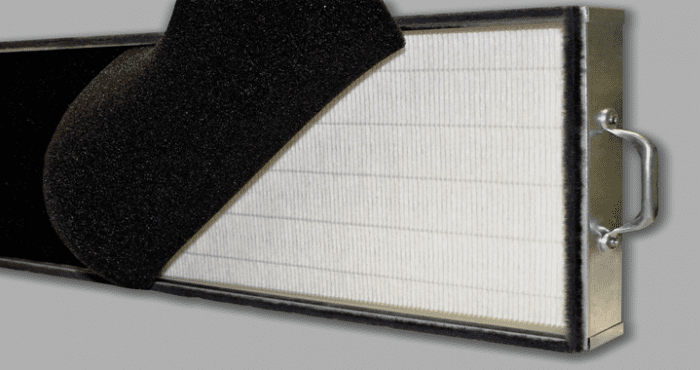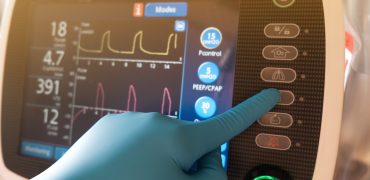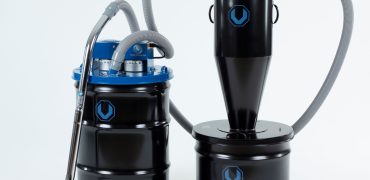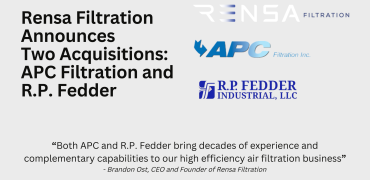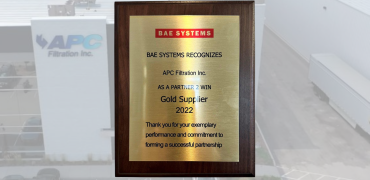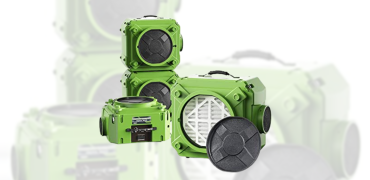HEPA filters, or High Efficiency Particulate Air filters, are some of the most popular air filters on the market for homes, businesses, and custom use. They are required to filter a minimum of 99.97% of particles down to 0.3 microns to be considered True HEPA, although many industrial and custom HEPA filters will perform even more efficiently than this.
HEPA filters have their roots in commercial and scientific industries, but have long been on the residential market for use in air purifiers, HVAC systems, vacuums, and more. With air quality, pollution, and wildfires becoming more and more concerning in countries around the world, HEPA filters are being used more often than ever in residential and commercial use in industries that previously may not have chosen them.
So how did HEPA filters get their start? APC Filtration explores the history of HEPA filters below.
HEPA Filters History
HEPA filter technology was first designed and created in the 1940s by the US Army Chemical Corps and National Defense Research Committee. As part of the Manhattan Project, scientists were required to develop a filter suitable for removing radioactive materials from the air. The Manhattan Project was a classified government project surrounding the development of the atomic bomb during World War II.
Researchers needed a way to control very small particles which had become contaminated by nuclear radioactive sources. The goal at the time was to filter out these tiny airborne radioactive toxins that were emitted during the development and manufacturing of atomic bombs.
The filter design itself was based on gas masks worn by U.S. Soldiers fighting in the war. These gas masks were developed to contain a special type of complex paper made from asbestos and cellulose fibers that filtered out airborne toxins, keeping the soldiers safe during gas attacks. This filtration method worked for the soldiers, and protection against this type of warfare was also required for operational headquarters, where wearing individual gas masks was more problematic. The Army Chemical Corps developed an air purifier unit fitted with this filtration paper to be used in HQs along the front. This unit and filtration method is an early precursor to the HEPA filter.
Finding a Solution
The Army Chemical Corps asked Corps Nobel Laureate Irving Langmuir to recommend filter test methods and general recommendations for creating the material to filter out these radioactive particles. He is the man behind determining 0.3 microns as the particle size to focus on. He knew that radioactive fallout is made up of microscopic particles and that these particles could be trapped by a filter. He identified 0.3 micron size particles to be the most penetrating size particles and most difficult and concerning, and informed the Army Chemical Corps to focus their efforts on filter efficiency at this level.
This small group of scientists involved in the development of the first HEPA filters were successful, although HEPA filters back then were significantly larger than they are now! They were originally referred to as “absolute filters” because of their effectiveness in these extreme situations and environments. This term became a registered tradename and so the generic term “HEPA” started being used after 1950.
HEPA Post-War
HEPA technology was declassified after World War II and became available for commercial and residential use. Their use in medical, industrial, and pharmaceutical industries was apparent, and they began to be adopted across industries where there are harmful particles being released into the air. HEPA filters played a key role in the research and development of modern pharmaceuticals, aerospace engineering, and computer chip manufacturing.
Since the 1950s, their use has expanded to include mold remediation, asbestos cleanup, lead cleaning, chemical cleaning, home air filters, office filters, and more.
Sources:
https://journals.sagepub.com/doi/pdf/10.1177/109135059800300111

